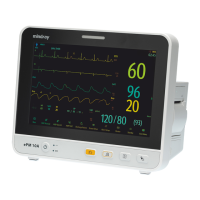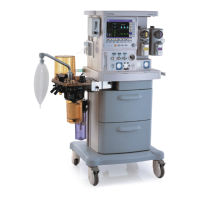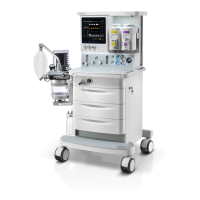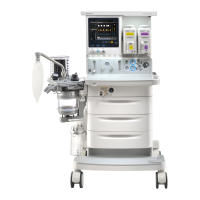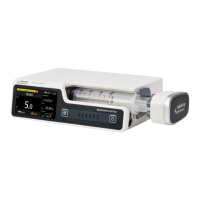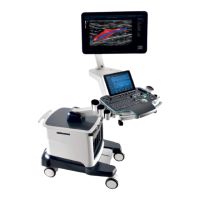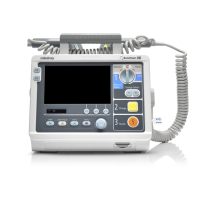15 - 1
15 Monitoring Noninvasive Blood Pressure (NIBP)
15.1 NIBP Introduction
The monitor uses the oscillometric method for measuring the non-invasive blood pressure (NIBP). NIBP
measurement is based on the principle that pulsatile blood flow through an artery creates oscillations of the
arterial wall. The oscillometric device uses a blood pressure cuff to sense these oscillations that appear as tiny
pulsations in cuff pressure. The Oscillometric devices measure the amplitude of pressure changes in the
occluding cuff as the cuff deflates from above systolic pressure. The amplitude suddenly increases as the pulse
breaks through the occlusion in the artery. As the cuff pressure decreases further, the pulsations increase in
amplitude, reach a maximum (which approximates to the mean pressure), and then diminish. The oscillometric
method measures the mean pressure and determines the systolic and diastolic pressures.
NIBP monitoring is intended for adult, pediatric and neonatal patients.
• Blood pressure measurements determined with this device are equivalent to those obtained by a
trained observer using the cuff/stethoscope auscultatory method or an intra-arterial blood pressure
measurement device, within the limits prescribed by the American National Standard: manual,
electronic, or automated sphygmomanometers.
• NIBP measurement can be performed during electro-surgery and discharge of defibrillator.
15.2 NIBP Safety Information
• Be sure to select the correct patient category setting for your patient before NIBP measurement. Do
not apply the higher adult settings for pediatric or neonatal patients. Otherwise, it may present a
safety hazard.
• Do not measure NIBP on patients with sickle-cell disease or on the limb where skin damage has
occurred or is expected.
• Use clinical judgment to determine whether to perform frequent unattended blood pressure
measurements on patients with severe blood clotting disorders because of the risk of hematoma in
the limb fitted with the cuff.
• Do not use the NIBP cuff on a limb with an intravenous infusion or arterial catheter in place. This
could cause tissue damage around the catheter when the infusion is slowed or blocked during cuff
inflation.
• Do not apply cuff on the arm on the side of a mastectomy or lymph node clearance.
• Continuous cuff pressure due to connection tubing kinking may cause blood flow interference, and
resulting in harmful injury to the patient.
• NIBP reading can be affected by the measurement site, the position of the patient, exercise, or the
patient's physiologic condition. If you doubt the NIBP measurements, determine the patient’s vital
signs by alternative means, and then verify that the monitor is working correctly.
• Devices that exert pressure on tissue have been associated with purpura, ischemia, and neuropathy.
Inspect the application site regularly to ensure skin quality and inspect the extremity of the cuffed
limb for normal color, warmth and sensitivity. If the skin quality changes, or if the extremity
circulation is being affected, move the cuff to another site or stop the blood pressure measurements
immediately. Check more frequently when making automatic or STAT measurements. Auto NIBP
measurements with one and two minute intervals are not recommended for extended periods of
time.
• NIBP diagnostic significance must be decided by the physician.

